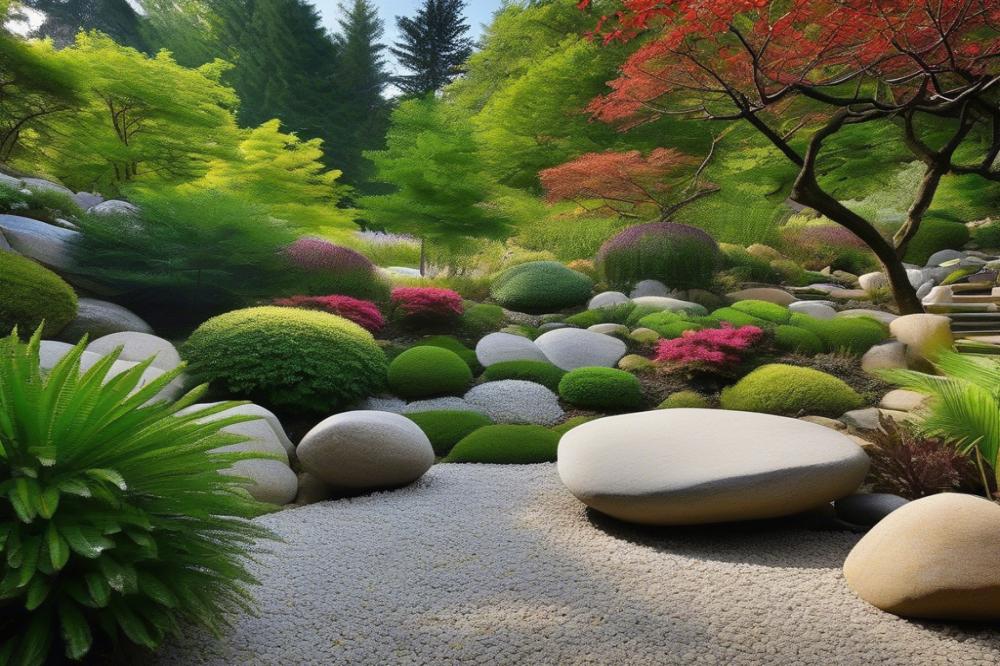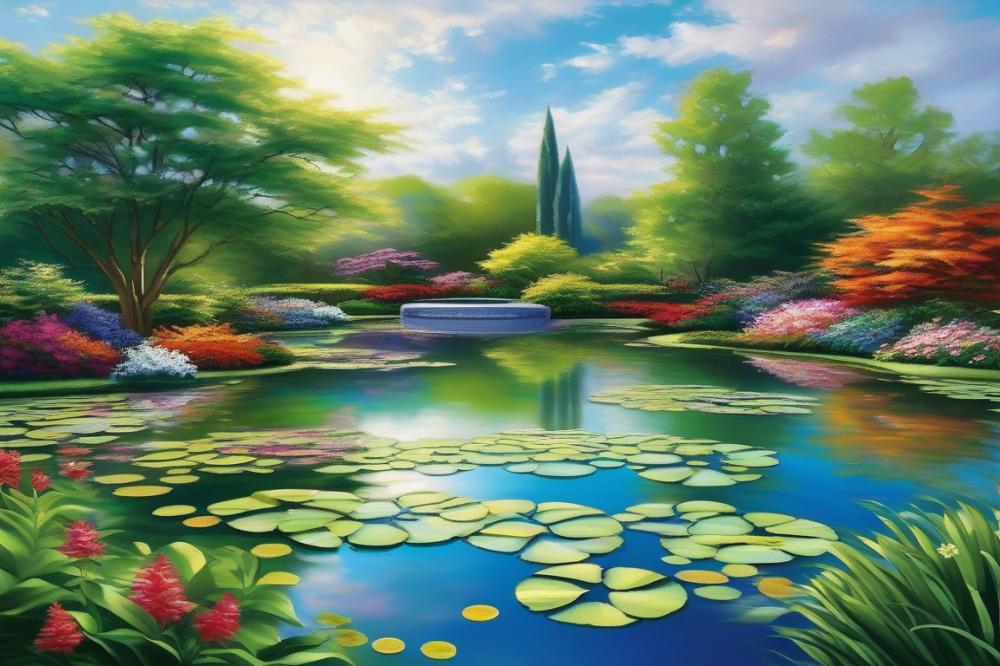Using large boulders in rock garden design
rock garden design is an artistic way to integrate natural elements into outdoor decor. It involves using various materials, including stones, soil, and drought-tolerant plants, to create a serene space. large boulders play a vital role in this style. They offer visual weight and can easily become eye-catching focal points within the garden layout.
The presence of boulders enhances the overall garden aesthetics. Their rugged texture contrasts beautifully with softer elements like foliage and flowers. Strategically placed stones can lead the eye through the landscape, creating a sense of movement and flow. Additionally, different sizes and shapes of rocks add a dynamic touch, making the garden feel alive and well-crafted.
This article will explore how to effectively use large boulders in your garden. We will discuss stone placement techniques and ways to incorporate them alongside drought-tolerant plants. You will learn how to highlight boulders as key garden features while maintaining a harmonious layout. Understanding these concepts will guide you in creating an inviting and visually appealing outdoor space.
Types of Rock gardens
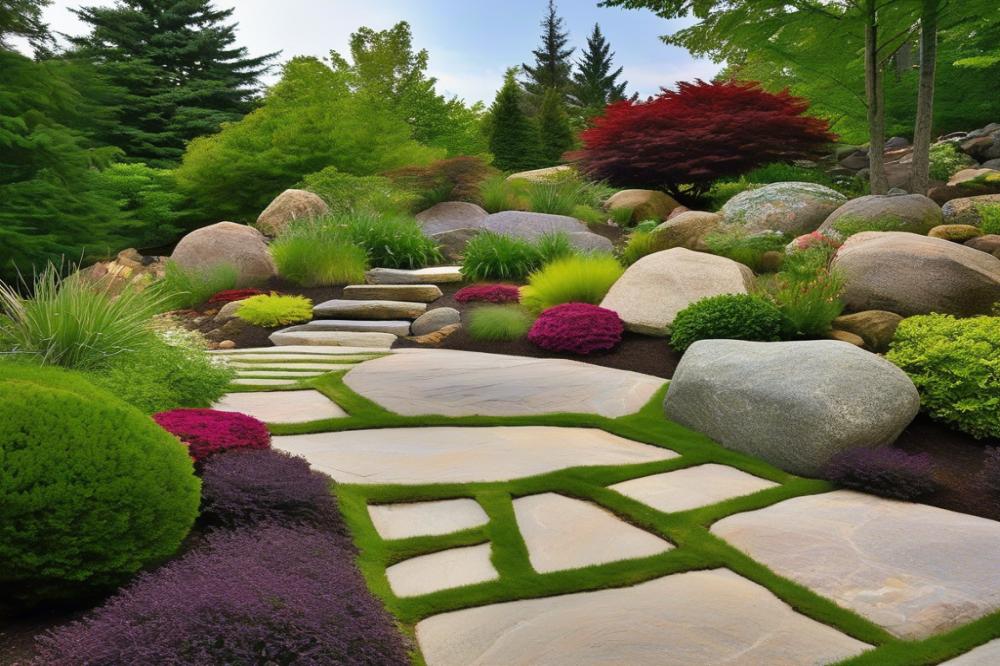

Rock gardens vary widely in style, showcasing different approaches to landscaping and outdoor decor. Some common styles include traditional alpine gardens, modern minimalist designs, and Japanese rock gardens. Each style has its own unique characteristics, and large boulders can enhance any of these types.
Traditional Alpine Gardens
Alpine gardens typically feature a variety of stones and plants that resemble natural mountain environments. Large boulders serve as anchors in these designs, creating a sense of balance and stability. Stone placement is key in this setting. With careful arrangement, boulders provide striking focal points amidst smaller rocks and colorful, drought-tolerant plants.
Modern Minimalist Gardens
In contrast, modern designs often favor simplicity and clean lines. Here, the use of large boulders can complement the overall garden layout by providing contrast against more uniform features. Large stones can evoke a sense of the raw, natural elements while still keeping a sleek, uncluttered look. The texture from the boulders adds depth without overwhelming the space.
Japanese Rock Gardens
Japanese gardens focus on harmony and tranquility. They frequently incorporate large boulders as symbolic elements representing mountains or islands. Careful positioning of stones creates balance in the garden features. Additionally, these boulders often outline pathways or areas for contemplation, enhancing the serene atmosphere.
As you consider how large boulders fit into your rock garden design, think about the styles that resonate with you. Sometimes blending elements from different traditions can yield impressive results. Remember that whether you choose a traditional alpine garden or a more modern minimalist style, the goal is to create a beautiful outdoor space that reflects your personality and aesthetics.
Techniques for Using Large Boulders in Design
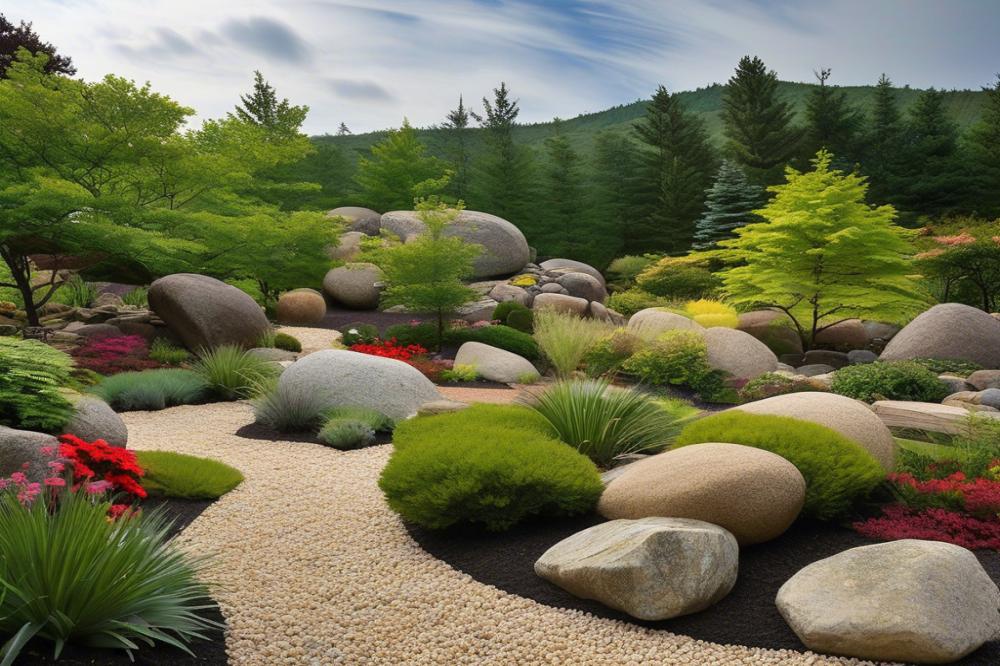

In landscaping, the way you place large boulders can greatly enhance your garden aesthetics. Consider the scale of each rock. Some may dwarf nearby plants, while others might blend in perfectly. First, focus on stone placement. Place boulders in clusters or in a line to create a sense of balance and unity. Avoid scattering them randomly, as that can disrupt the flow of your design.
Creating natural-looking arrangements is essential. Imagine how boulders would appear in nature. Combinations of different sizes and shapes can add visual interest. Mix large stones with smaller ones to achieve a more organic look. This variation in texture can mimic what you’d find in a wild landscape. Aim for asymmetry when arranging these garden features. That way, your layout will feel less structured and more inviting.
Utilizing boulders as focal points can significantly transform your outdoor decor. Place the largest boulder at the center of your design, drawing the eye instantly. Surround it with drought-tolerant plants to maintain sustainability and add softness. Colorful flowers can also contrast nicely against the stone, making everything pop. Keep in mind the surrounding vegetation; it can influence the overall impression of your rock garden.
Incorporate natural elements like moss or lichen on the boulders. This technique brings life to the stones, integrating them further into the garden. By doing this, your design feels more cohesive. Lighting can also enhance these boulders, especially during the evening hours. Strategically positioned lights can highlight their textures and shapes, providing drama to the scene.
Overall, plan with intention. Each boulder should serve a purpose in the garden layout. Whether as a seat, a pedestal for plants, or a simple backdrop, they play a significant role. To optimize visual impact, consider how each rock fits into the larger picture. Following these techniques will help create a stunning rock garden that stands out.
Integrating Drought-Tolerant Plants
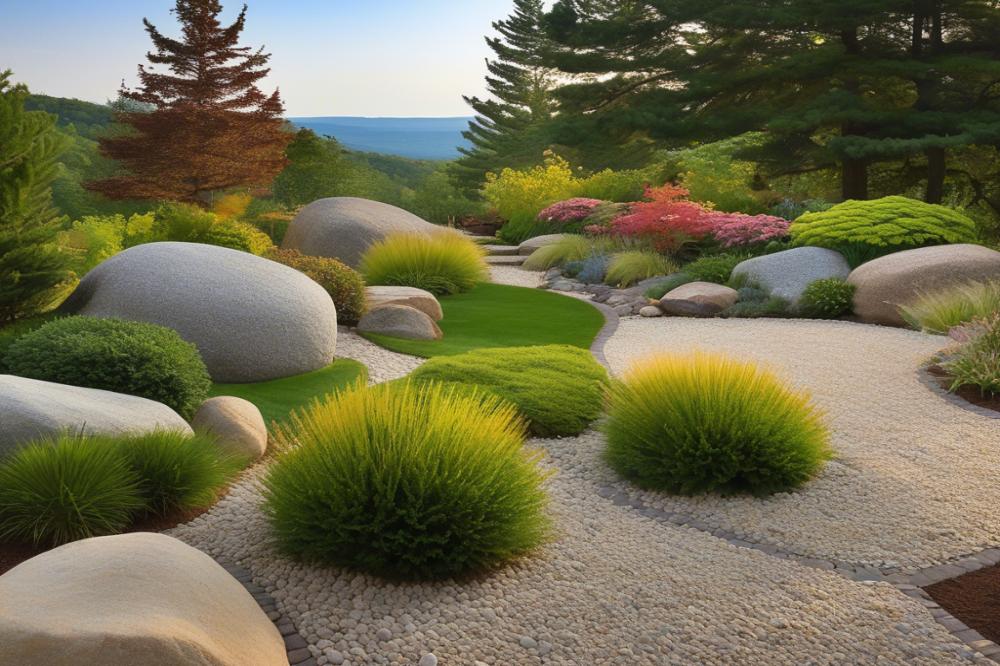

Benefits of Drought-Tolerant Plants in Rock Garden Design
Drought-tolerant plants offer many advantages when designing a rock garden. They thrive in dry conditions, requiring less water once established. This feature makes them perfect for regions with limited rainfall. By choosing these plants, you can reduce maintenance efforts. Lower water consumption also supports eco-friendly landscaping practices. These plants frequently display vibrant colors and unique textures, adding depth to the garden’s overall aesthetics.
Planting Strategies Around Large Boulders
Strategic placement of plants around large boulders enhances the garden layout. Start by selecting focal points where the boulders will anchor your design. Then, consider the height of the plants in relation to the stones. Taller species can be positioned behind boulders to create a sense of depth. Shorter varieties work well in the foreground, allowing the stones to stand out. Utilize natural elements by mimicking the local environment. Grouping plants in clusters can also create visual interest. Varied stone placement can lead to a more organic look.
Recommended Plant Species That Complement Stone Features
Selecting the right plants can elevate the beauty of stone features. Consider lavender, which not only withstands drought but brings aromatic charm. Sedums are low-growing and thrive in rocky areas, providing excellent ground cover. Another great option is the ornamental grass, like blue fescue, which introduces pleasing movement. Additionally, succulents like agave add sculptural qualities to your design. For a splash of color, zinnias and blanket flowers can fit perfectly, contributing to the overall charm of the outdoor decor. Using a mix of these species will enhance the rock garden’s texture and vibrancy.
Creating Texture and Balance
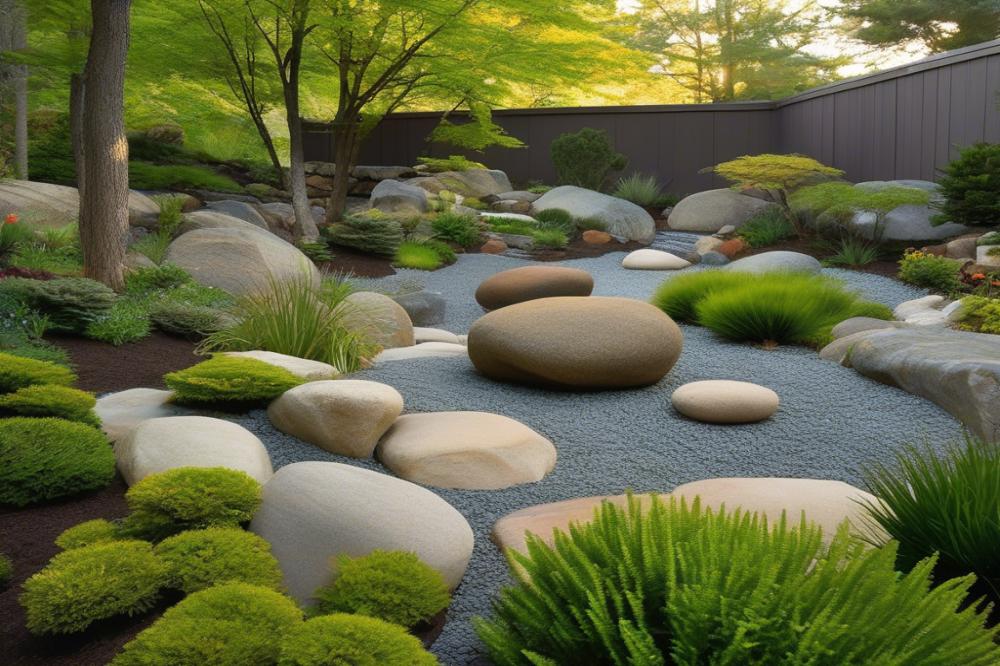

Texture plays a vital role in garden aesthetics. It can transform a simple outdoor space into an intriguing landscape. Using large boulders adds a rugged element to your design. Their natural surfaces catch the light, creating shadows and highlights that draw attention.
Mixing boulders with smaller stones enhances visual appeal. Try arranging pebbles, gravel, or decorative rocks around the larger stones. This combination introduces varied textures that serve to enrich the overall look. Additionally, incorporating drought-tolerant plants can harmonize with the stone placement.
The proper balance is crucial when it comes to large-scale boulder placement. Too many large rocks may overwhelm your garden layout. However, scattered strategically, they can serve as focal points. Arranging them near pathways or beside vibrant flowers invites exploration.
Coordination is key when integrating different garden features. Select boulders that complement both the size and scale of your outdoor decor. Creating a seamless blend of rock and plant life cultivates a natural appearance. This thoughtful integration can transform what could be a chaotic design into a serene setting.
Incorporating Natural Elements and Features
Water features can enhance outdoor decor by adding serenity and movement. A small pond or a bubbling fountain invites wildlife and creates a calming atmosphere. These elements naturally attract birds and butterflies, making your garden more vibrant.
Stone placement is vital in defining space and creating distinct garden zones. Arrange large boulders to guide visitors through various areas, like a cozy seating nook or a thriving flower bed. This layout helps establish different atmospheres, offering a sense of exploration.
When creating a rock garden, mixing in drought-tolerant plants will support the natural look. Select low-maintenance species that thrive in rocky conditions. Incorporating various textures through plants and stones creates visual interest that draws the eye.
Focal points serve as anchors within your garden layout. A particularly large boulder can stand out as a centerpiece, while smaller stones may complement surrounding plants. These natural elements blend seamlessly into the landscape, making the design feel organic.
To maintain a naturalistic feel, pay attention to the arrangement of rocks and plants. Avoid overly symmetrical patterns, as they can detract from the wild beauty of nature. Instead, try scattering stones and plants in a more random fashion, allowing the landscape to appear more authentic.
Paths constructed from stepping stones guide guests without invading the natural beauty. Paving a path with flat rocks not only provides a practical aspect but also adds to the overall garden aesthetics. This subtly integrates the functional and the aesthetic, enhancing the outdoor experience.
Lastly, keep your design cohesive. Using similar colors and materials throughout creates a unified appearance. This approach allows each element, whether stone or plant, to stand out while still feeling part of a larger whole.
Wrapping Up Your Rock Garden Journey
Recapping the key points in designing with large boulders is essential. First and foremost, your choice of stone acts as a foundational element. Large boulders can create visual interest and serve multiple purposes in a garden space. They can act as focal points or even provide seating areas. Proper placement can mimic nature’s beauty, inviting visitors to explore your outdoor decor.
Don’t hesitate to experiment with various techniques. Mixing plants of different heights and colors around your boulders can bring the entire area to life. Try layering ground covers or taller perennials for a unique look that reflects your personal style. A touch of creativity can yield remarkable results.
Beauty and function go hand in hand in any landscaping project. Rock gardens offer a chance to express creativity, while also providing habitats for local wildlife. These gardens can also save water and promote sustainability. Every boulder lays the foundation for a space that is both beautiful and practical.
As you build your rock garden, let your imagination flow. Allow your personality to shine through your design choices. That’s where the magic happens. Enjoy the journey and the satisfaction it brings. Happy gardening!

